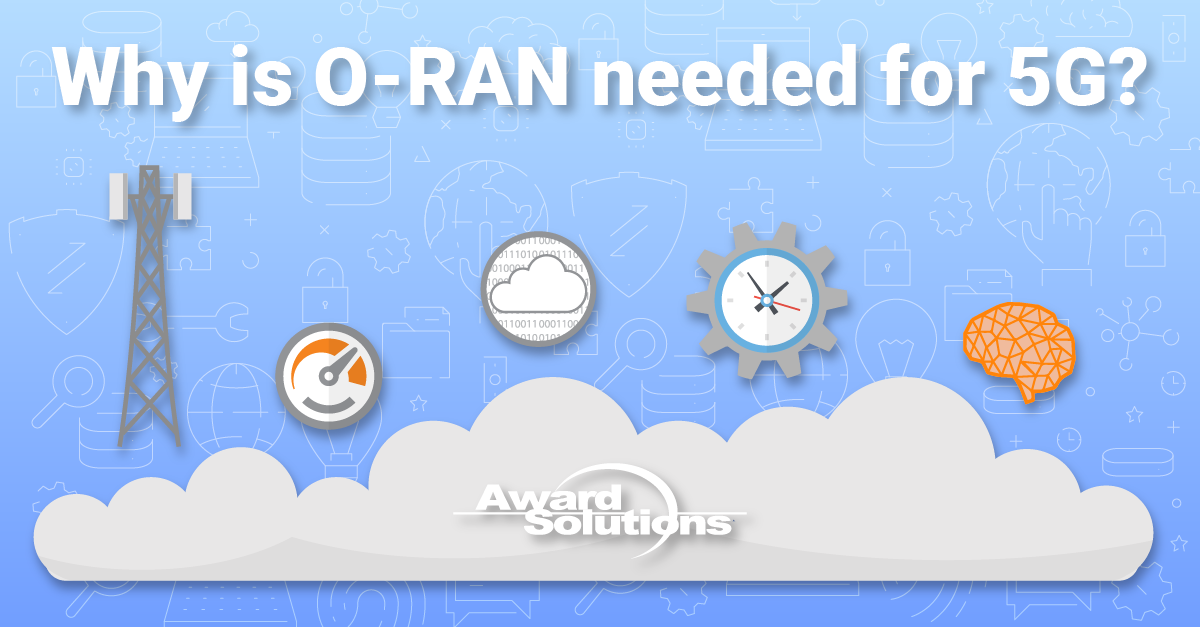
In 5G, the Radio Access Network (RAN) is evolved to support more frequency bands, disaggregation of the RAN controller (baseband unit), and services with conflicting needs relating to throughputs, latencies, the density of devices, etc. Wireless network standards have historically focused efforts on the functions of the RAN, the interfaces between them, and operational procedures.
Who is the O-RAN Alliance?
As the needs of network operators evolve in 5G, the O-RAN Alliance has ventured beyond established wireless network standards to further evolve the definition of the RAN, creating more flexibility for deployment, addressing multi-vendor interoperability, and enabling a larger ecosystem of innovation for RAN solutions. To this end, the O-RAN Alliance has organized a worldwide community of mobile network operators, vendors, and research institutions with the intent of reshaping the RAN for more intelligent, open, virtual, and interoperable networks.
The O-RAN Alliance’s work, building on wireless network standards, provides for more deployment flexibility, addresses multi-vendor interoperability, and brings to the table a larger ecosystem of innovation for RAN solutions. For 5G, the network needs to achieve the 5G vision of one hundred times the area capacity of 4G. To achieve this, there must be a higher density of cells, more carriers with wider bandwidths, and advanced beamforming with Multiple Input Multiple Output (MIMO) techniques deployed in the RAN.
What is O-RAN?
Building on wireless network standards, the O-RAN Alliance extends specifications for the RAN, supports an open software community, and encourages integration and interoperability testing for O-RAN implementations. These efforts support the development of a virtualized, multi-vendor interoperable, intelligent Radio Access Network.
The O-RAN Architecture
The fundamental O-RAN architecture includes Service Management and Orchestration (SMO) working with an O-Cloud. The O-Cloud is where virtual RAN functions are established. The SMO provides Operations, Administration, and Maintenance (OA&M) for the RAN functions in the network, whether they are physical network functions or virtual, cloud-based network functions. A RAN Intelligent Controller (RIC) divided between the SMO and the O-Cloud supports the optimization of RAN performance.
Virtualized RAN
The RAN functions can be virtualized to run in cloud infrastructure. This brings many benefits, including centralizing some aspects of the RAN to reduce the cost of ownership, separating the software upgrade and hardware upgrade cycles, and enabling deployment flexibility for operator networks, operator-integrated private networks, or enterprise-owned private networks with differing latency, throughput, and transport needs.
Multi-vendor Interoperable RAN
The O-RAN Alliance defines an open fronthaul interface, allowing RAN control and radio functions to be provided by different vendors. For a RAN function to be open or “O,” whether it is a physical network function or a virtual network function, it must support O-RAN defined Application Programming Interfaces (APIs). The APIs for SMO interaction with the O-Cloud and RAN functions enable vendor-agnostic element management and OA&M. The APIs between RAN functions and the RIC allow the RIC to update operational policies and even participate in RAN decisions.
Intelligent RAN
The RAN Intelligent Controller (RIC) for RAN performance optimization supports third-party applications that can enhance different aspects of RAN decisions and operations. Divided into non-real-time and near-real-time aspects, the RIC can take advantage of artificial intelligence and machine learning to train models that support RAN operations, which, due to the complexities of the RAN and the services it supports, are no longer intuitive – even to the most experienced RAN engineer.
The RIC’s support for third-party applications further extends the ecosystem, encouraging more innovation in the area RAN performance. These applications can use artificial intelligence and machine learning to address 5G needs like network slicing as well as latency and reliability, in addition to traditional RAN performance optimizations relating to handover, interference management, quality of service management, etc.
The Near-Real-Time RIC can receive policies and machine learning models from the Non-Real-Time RIC, collect information from the O-RAN gNodeB functions, and can influence the behavior of the RAN using third-party deployed applications (known as xApps) for operations like carrier and traffic management and handover.
Conclusions
The 5G requirements to support many different use cases and services with conflicting needs for throughput, latency, and device density increase the complexity of the RAN. Support for new air interface capabilities, including new frequencies, wider bandwidth carriers, and beamforming with MIMO, further contribute to this complexity.
Building on wireless network standards, the O-RAN Alliance extends RAN specifications towards a virtual, multi-vendor interoperable, intelligent Radio Access Network.
